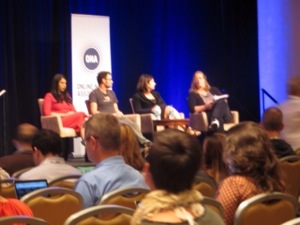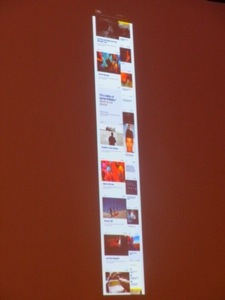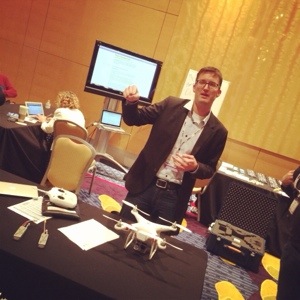“There is an asymmetry at the moment of how the government can access our information” but isn’t immediately transparent to journalists, attorney Naboha Syed observed during a keynote panel on the third and final day of ONA13.
Her succinct observation came on the tail end of an hour long discussion centered around the Edward Snowden case and the age of government surveillance.
It began, as It would eventually end, with Guardian US editor-in-chief Janine Gibson fielding questions about the high profile and massive story. She explained in broad strokes how Snowden made contact with the newspaper, how he wanted to reveal himself as the source and had a respectful approach to the judgement of his chosen outlet in the fourth estate.
In exchange, Gibson said, the Guardian took several steps to protect their private communications. Firstly, she said, reporters were sent to communicate with Snowden face-to-face because that is always the most secure method. She said it took a great deal of trust to send them to Hong Kong and not want them to provide updates to the home office, which would ruin the security plans.
When they did communicate, she said, they used secured disposable chatrooms.
Micah Lee, Staff Technologist for the Electronic Frontier Foundation, observed that encryption was also used in the initial email contact with Snowden. It is a trend he observed was growing as organizations try to learn good habits that will protect them if an important source does come up.
“What we do on the internet and what we say on the phone is like an open book,” Lee answers, adding good security habits close the book at least partially.
Nabiha seemed to agree, saying the proposed federal shield law won’t protect the kind of national security information leaked by Snnowden. She added, “I don’t know what (law) can.”
“Technological solutions are really key because we don’t have anything else,” she said.
The result? The panel concluded we are at the beginning of a new era, and suggested investing in the security and infrastructure to be prepared for the future. Having in-house counsel and basic security protocols were recommended.
Precautions aside, Gibson said the Guardian staff was not under a pretense that security would continue after publication began. After the first story, she said, everyone would know there was a leak. The second would prove it was a big leak and the third, she said, would make the government begin to investigate very quickly.
The Snowden NSA documents story is not over, as Gibson revealed. They are still exploring the information in the leak and preparing more stories.
“We have a ton of stuff still to do. We’re not stopping,” she said.

–Phil Tenser, KMGH






